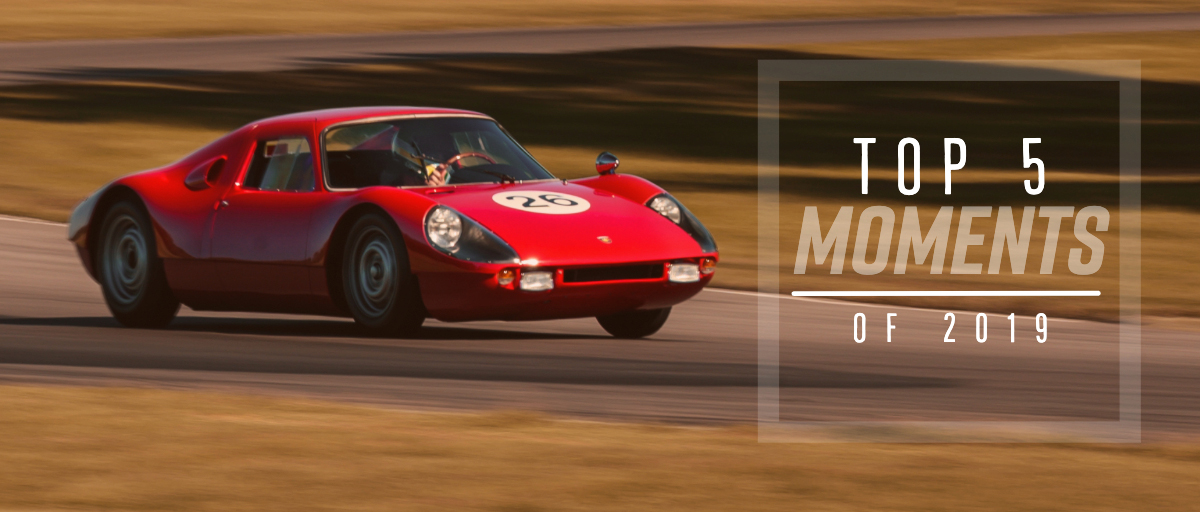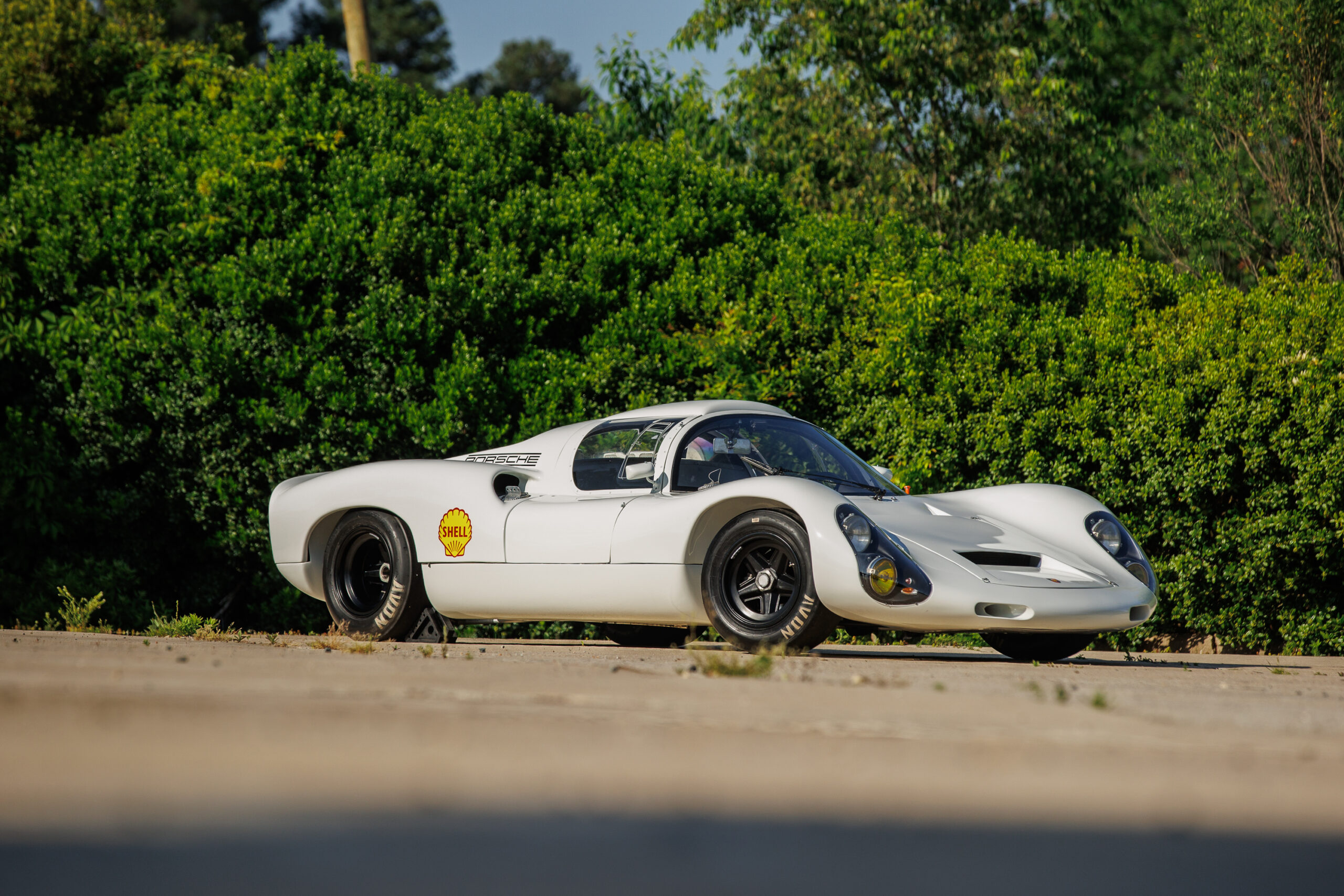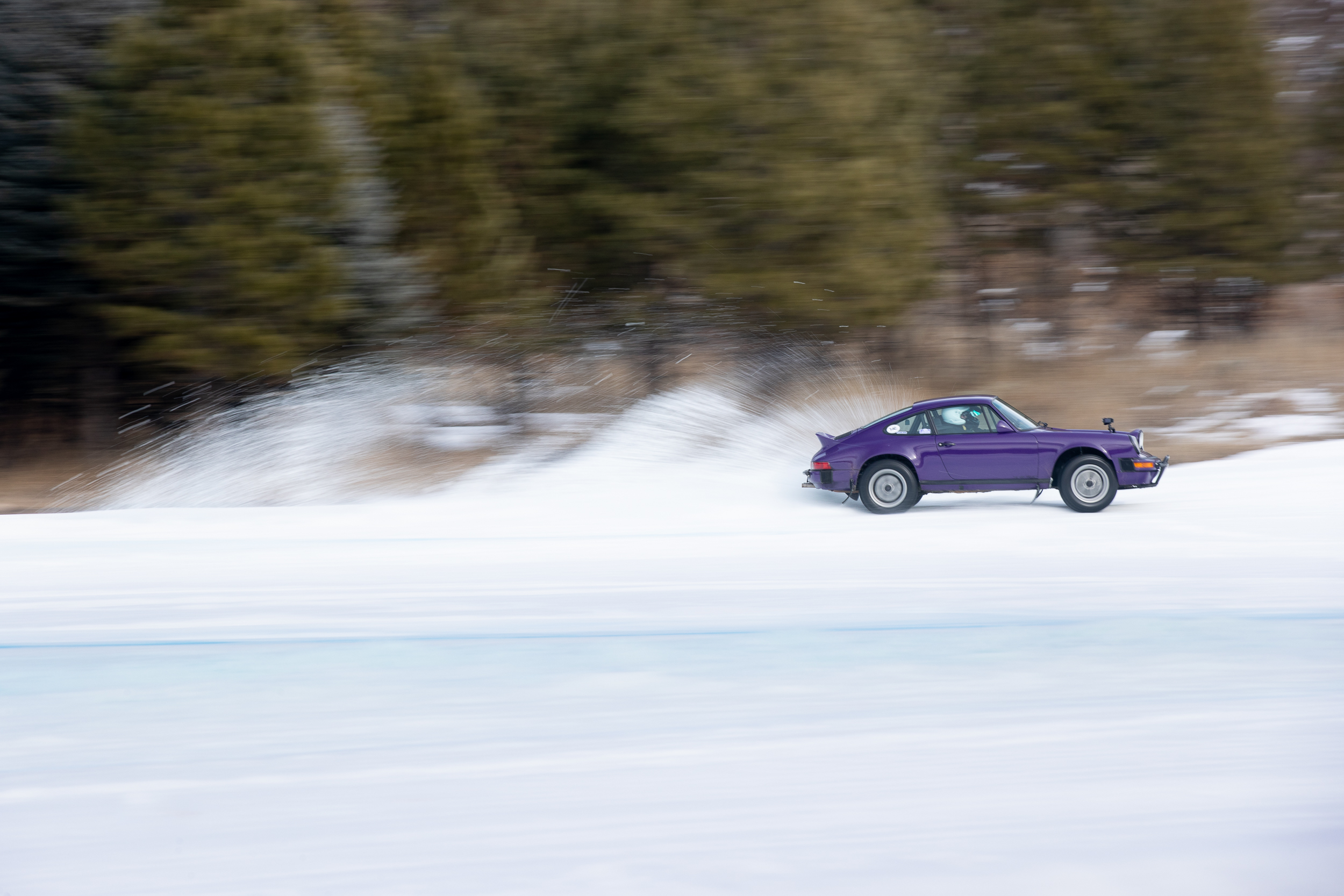5. Two Special ’75 Turbos Signed, Sealed and Delivered
Earlier this year our 930 expert, Bryan Gremchuk, and the restoration team finished up two special ’75 Turbo projects that we have been working on for the past few years. Here are the details on both of the cars as well as an interview Bryan did right before we shipped them out to the proud owners.
Chassis 930 570 0162 was finished on the production line in April of 1975 but delivered in May. It was delivered in Salmon Metallic with a black leather interior. It was ordered with no air conditioning, rear wing delete, and special one-off front apron that was completed by the Porsche “design studio.” To round out this ultra-rare custom 930, Chassis #0162 was ordered with no model designation lettering on the engine lid, special Bamberg radio, limited slip, Pirelli P7 tires, copper red carpet, and wheels painted in a contrasting Gazelle metallic. Chassis also left the factory with a healthy engine with 263hp after being tested on the dyno.
Chassis 930 570 0117 was finished on the production line on April 10th, 1975. It was delivered in paint to sample Oak Green Metallic with a black leather interior. It was ordered with air conditioning, a Becker Grand Prix Radio, and had special Cibié fog lights installed at the dealer. Chassis #0117 was also delivered with a very early gearbox that is out of sequence of production and was built in 1974. On the factory gearbox card, it was noted that 1st and 2nd gear ratios were changed, and had a 40% limited slip differential. Lastly, chassis #0117 was delivered with a strong engine with a 269 hp rating from the dyno before leaving the factory (Porsche officially advertised 260hp).
Both these individual Turbos were ordered with ultra-cool specifications and the restorations were well worth the effort. The factory originally assembled these 1975 Turbos was a lot of attention; they offered the first lot only to their best customers who were allowed special orders to a high degree of customization. The factory was obsessed with the gearboxes and final driving characteristics of these first generation 930s. It shows; driving an early 3.0 Turbo is a fun and hybrid experience. You are aware of the turbo but it feels like a lighter more responsive earlier 911.
What we did not appreciate were all the nuances of midyear impact bumper cars and how they were produced at the factory.
From correct date-coded turn signal lenses, mid-year factory overspray practices, correct date-stamped parts (Fuchs wheels, Bilstein shocks, aluminum cross members, etc.), correct aluminum valve stem supports, correct Space Saver tire, factory inspection marks, front one piece S-type aluminum ATE brake calipers, correct yellow zinc plating, original German hardware for the complete car, “banana style” aluminum trailing arms, correct decals, determining correct parts for the earlier 930/50 engine and exhaust system – the list goes on and it was all a neurotic challenge. We went through four different companies that perform black anodizing before finding the correct hue for the window trim and door frames. The custom front apron that we created for chassis #0162 took a lot of time to produce. We only had visual references from two pictures of an ill-fitting factory prototype and the one-piece fiberglass front spoiler featured on the 1975 and 1976 Turbo brochure cover.
4. The 29th California Mille Miglia
In April, we teamed up with Chopard and Petrolicous for the 29th running of the California Mille Miglia in the ’57 Speedster from the Ingram Collection. Here is a snippet from Tim Kuhn’s persective… read the full story in The 29th California Mille Miglia article.
Those of you who have spent time in northern California know how diverse the topography is through the state. In no particular order you’re in the valley and wine country, then through rolling hills, up into the mountains and down, through the huge redwood forests, and then a savoring panoramic view of the coast. The scenery and for the most part good driving roads, lend the entire region the necessary credentials as the perfect place to hold such a rally. Blessed with great weather, a killer route, and a great group of cars and drivers, I’d call the 29th California Mille Miglia a huge success. I’m sure Martin was smiling down on all participants and their cars.
To pull off a rally of this magnitude obviously requires a lot of planning and organization, I commend the Mille team for their efforts. Certainly it consumed months leading up to the event. Then executing it for 5 days, making sure everyone knew where to go, had a place to sleep, food to eat, roadside assistance (umm, err, I may have run out of gas? LOL), and really ensuring everyone had a good time. Their route book—one of the best I’ve seen—made our role as participants so easy. Congrats to the Mille team for making it all happen without hiccups.
Photos by Petrolicious
Teaming up with Chopard as the chauffeur for the official timekeeper of the rally was an opportunity that really stoked us. Thank you also to Jean-Baptiste Maillard of Chopard and his team for putting up with my erroneous driving; they were all great sports and a fun group to share the adventure with.
As I was the lucky one chosen to drive the 1957 Speedster nicknamed “Blue Belle” that became known as the “Chopard Car,” I am grateful for and humbled by the experience. A huge thank you to the Ingram Collection for letting us sticker-up, prep, and take the Speedster on such a journey. Me out there having all the fun! Knowing full well I am a small piece of Road Scholars and representing our team. I have a lot of gratitude for all that we do and everything that had to fall into place in order for me to complete such an epic journey. Blue Belle performed beautifully as expected; it’s a testament to our service department and their job well done.
We—the participants—cannot thank the Swig family enough for such a wonderful tradition. The California Mille Miglia is a journey you must experience for yourself.
3. Chassis #5511 is Delivered to its Permanent Home
After years of research and restoration work, chassis #5511 is delivered to its permanent home. It was an honor to do this special Pre-A for a great friend and client.
VIN 5511 is a early four digit numbers matching coupe that was finished in Stuttgart on March 6, 1951. Porsches produced before March 1952 are distinguished by having a two-piece windshield, integrated body bumpers, and wood door sills. Approximately 1700 of these cars were made, of which perhaps 15-20% survive in various stages of repair. These early cars have skyrocketed in value for their rarity and purity in design.
2. The Second Annual Road Scholars Four Cam Jam
In October, we hosted the Second Annual Four Cam Jam in partnership with our friends from the Revs Institute. The Four Cam Jam is a private track day to celebrate the iconic Fuhrmann Four Cam engine. Here is a break down of the moments from the day.
The day finally came, a day that the Road Scholars team have been prepping for over 6 months, October 24th, 2019 – The Four Cam Jam. It started out as a cold, foggy morning in the north paddock at Virginia International Raceway. Excitement grew with the sounds of transport trucks unloading and cold starts by some of most rare Type 547 engines ever made. A 904, 356 GT’s, RSK’s and of course, Carrera Abarths… three of them to be exact.
It was an honor to be in the presence of arguably three of the best Carrera Abarths in existence. Witnessing them run around the 3.2-mile track was nothing less than exhilarating. We owe a huge thanks to the Revs Institute and famed collector, Miles Collier, for bringing out the very first Carrera Abarth GTL – Chassis 1001 (a class winner at the 1960 Le Mans as well as Monza and the Tourist Trophy). Chassis 1002 – the iconic French-Blue car that won its class in the 1961 Targa Florio race added to the list of rarity. And to top it off we had the Ingram Collection’s Chassis 1008 coming fresh off a Best in Class win at Pebble Beach.
We believe this was the first time in over 40 years that Chassis 1001 and 1002 have been seen together. And to have three of the 20 built on the track at the same time was a great moment in the history of these three cars.
Patrick Long, a 3-time Le Mans winning driver took the 904 GTS out for a few laps. He was a complete natural even though this was his first time behind the wheel of a 4-cam car. He admitted it took some time to get used to and he was a little worried about getting too much “pick up” from the tires as he didn’t want to damage anything. But trust us, it did not seem that way watching from afar.
Another memorable moment was seeing our friend Jeff Zwart living out his dream driving the Behra Porsche Formula II car. Let’s be honest, it’s rare to find a Porsche that Zwart has not been behind the wheel of. But seeing him come off the track after a few laps in the Behra was a reminder of why we do this. It was nothing short of magical.
Gunnar Jeannette was the dedicated driver for the Collier Collection. He spent most of the day stretching the legs of the 1960 Carrera Abarth GTL #1001 and the 1959 RSK around the full course Gunnar is a very talented driver and it showed in every lap he took. Just watching him drive these cars as they were originally intended was an unforgettable experience.
1. Phoenix Rising
The story many of you know by now of the 1961 Carrera Abarth Chassis #1008. From a gas leak explosion to winning Best in Class at Pebble Beach here is a snippet of Cam Ingram’s story as well as a never before seen edit of “Phoenix Rising”.
The 69th Annual Pebble Beach Concours d’Elegance was a dramatic stage for so many reasons for Road Scholars and The Ingram Collection. As many people know by now, on April 10th, 2019 a gas leak explosion in Durham, North Carolina took the lives of two people. It also damaged the building that housed the Ingram Collection. One of the cars in that collection was the 1961 Porsche Carrera Abarth GTL chassis #1008 that had already been accepted to be on the lawn at Pebble Beach on August 17th, 2019, just 4 months away.
On average, the Pebble Beach Concours selection committee has sixty nominations to examine for each class and just a handful of class slots available to fill. These nominations are often the best and rarest cars from some of the most prestigious collections from around the world. The cars have either been concours restored (with an unlimited budget in many cases) by a proven restoration shop or are in original preservation condition. In other words, just to be invited and selected is a feat in itself. With that in perspective, it was a surreal moment when my father and I were standing in front of the Abarth and he asked me what were the chances of us still making Pebble. My somber response was very difficult to deliver. My father needed consoling and some positive news. In a businesslike manner, I informed him that it would all depend on the condition of the body once we stripped it down to bare metal. Secondly, if it was in bad shape, we could not jeopardize the quality of the restoration just to make the lawn. He nodded in agreement and walked away. No son ever wants to disappoint his father.
Like consummate professionals, our dedicated team worked seven days a week and accumulated over 5,000 hours of restoration between fourteen different individuals in order to reach Pebble Beach. Ninety-hour plus work weeks for four months straight is a test of body and mind. We also had to maintain the case load of other customer work. It’s a testament to our extraordinary team and great leadership of our General Manager Phil Whitehead that we were able to pull it together in such stressful circumstances. Our team wasn’t just turning themselves out to make the lawn, we wanted to be competitive and podium for the Ingram Collection. The Abarth had all the right ingredients to do well and we realized that we were a part of a storybook narrative that was once in a lifetime. The Phoenix Rises became a slogan in the shop.




